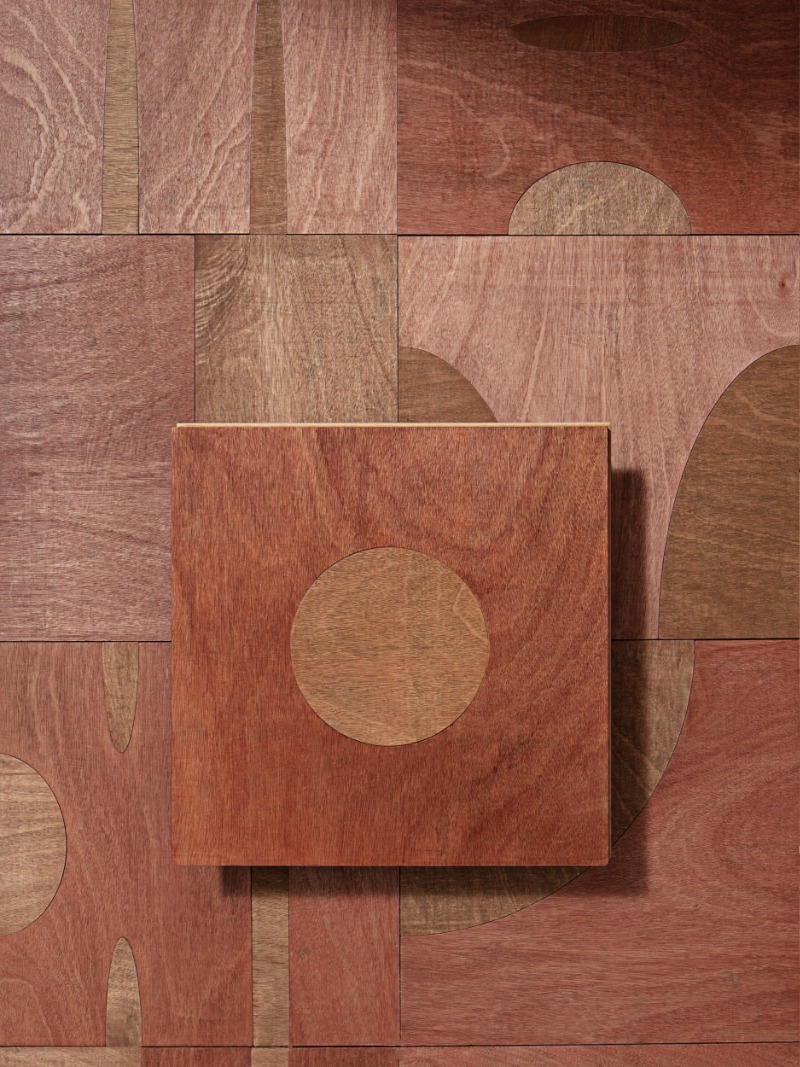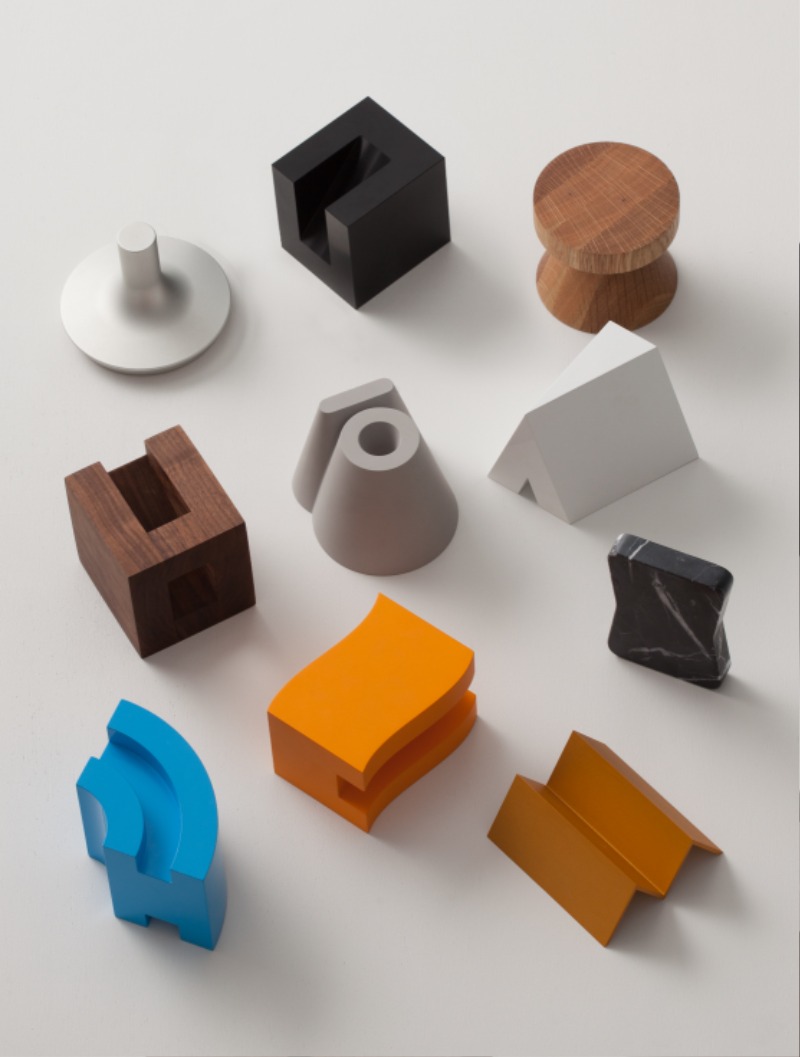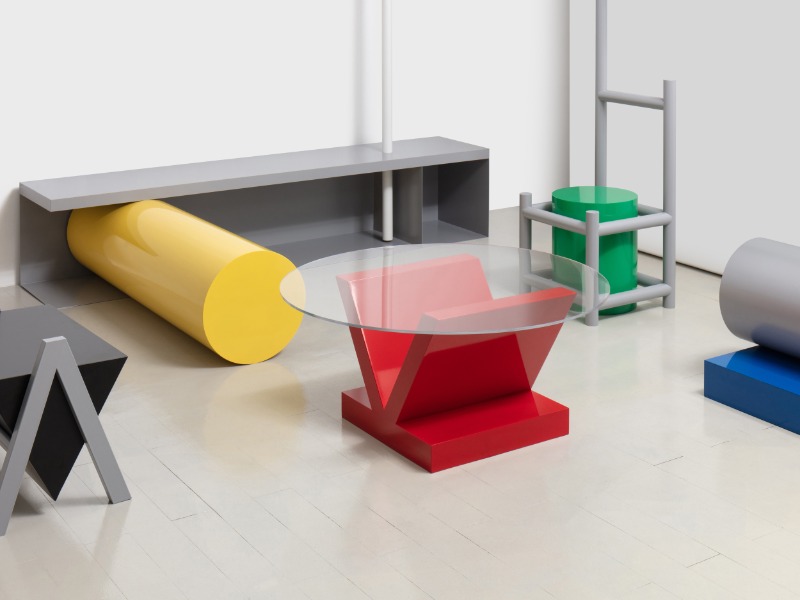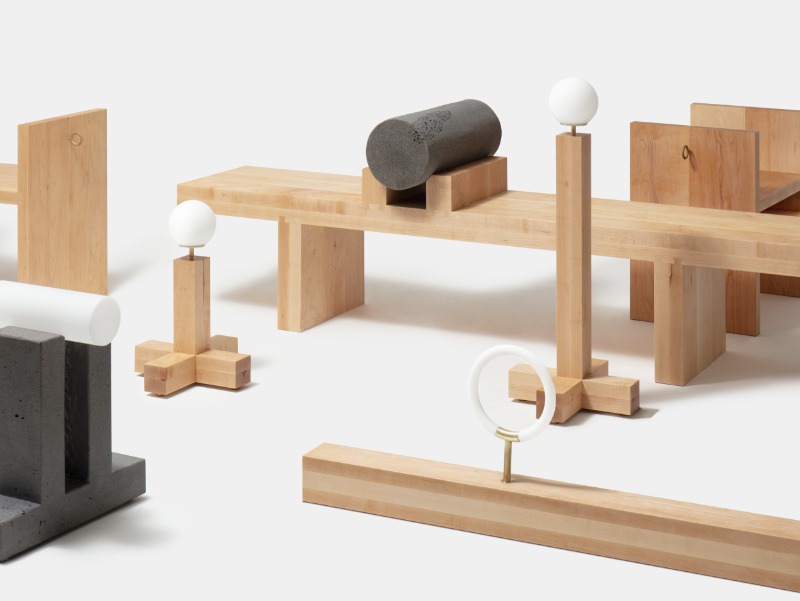Hangeul isn’t just a means of communication – it’s also a favored source of creative inspiration. Its letters are applied to furniture, clothing and many other everyday s. Rather than simply borrowing the visual image of the alphabet, many designers attempt to adapt Hangeul’s original concept and inherent structures in artistic as well as practical ways.
The National Hangeul Museum, which opened in 2014 on the grounds of the National Museum of Korea in Yongsan, Seoul, spearheads such design endeavors by planning and holding special exhibitions based on Hangeul themes and motifs. A selection of these works offers a glimpse of the potential of the Korean alphabet as source material for visual art.

“Activity Flooring” by Park Chul-hee and Yoo Hye-mi. 2019. Lauan plywood. 400 × 400 mm (each).These plywood modules represent the structure and function of the maru, a wood-floored hall at the center of a traditional Korean house where the family gathers to eat and spend time together. The concept of this communal space has been applied to the basic structures of Hangeul letters. The vertical grain expresses vowels and consonants, and the horizontal grain symbolizes the blank spaces between them. Different features in the grain make the patterns stand out, forming a variety of circular designs depending on the way the boards are arranged. This is a collaboration by graphic designer Park Chul-hee and furniture designer Yoo Hye-mi.
"Hangeul Cabinet” by Ha Ji-hoon. 2016. Oakwood, chromed polycarbonate. Top: 1,050 x 350 x 1,420 mm (WDH). Bottom (from left): 1450 × 400 × 370 mm (WDH); 370 × 420 × 1,535 mm (WDH).Traditional Korean wooden furniture features decorative metal fittings called jangseok, which serve both as hinges and accessories that reinforce joints and protect edges and corners. These cabinets have jangseok shaped in the pattern of Hangeul vowels and consonants, with the stylized dots and lines representing the innate order and rules behind the letters. The furniture design of Ha Ji-hoon is recognized for its reinterpretation of traditional motifs.
"Neo Modern” by Im Seon-oc. 2019.Hangeul letters were graphically rendered in three-dimensional forms and then printed on fabric. Hangeul has an inherently versatile nature; for example, the consonant “ㄱ” can be flipped over into “ㄴ,” and then turned into “ㄷ” with the addition of a line. This design makes full use of that versatility, with clothing that can be styled in various ways depending on how pieces are matched. PARTsPARTs, a fashion brand launched by designer Im Seon-oc, treats pieces of clothing as units, a design approach that was also applied to these outfits.
"Hangeul Framework” by Tiel. 2019.These cuboids have been inspired by the structural principles of the syllabic blocks of Hangeul, each consisting of one or two consonants and a vowel, which enable endless combinations. In ways that the first, middle and final phonemes are combined, cuboids of different colors and materials are assembled into a block, displaying the harmony of contrasting components. Tiel is a design studio operated by Lee Joong-han and Charlotte Therre, whose main interest is modular design.

"10 Hangeul Units” by Song Bong-gyu. 2016. ABS, walnut wood, aluminum. 180 × 180 × 180mm (WDH of each unit).These blocks of different shapes represent the syllabic construction of Hangeul letters. The 10 blocks, each standing for a vowel or consonant, have been shaped from diverse materials using 3D tools, offering a tactile experience of the abstract entity of letters and a fun way to understand the alphabet’s structural principles. Industrial designer Song Bong-gyu seeks to balance creativity and practicality.

"The Living Room of Vowels and Consonants” by Park Kil-jong. 2019. Powder coating on metal, light bulbs, acrylic plastic. Size adjustable.The modern Hangeul alphabet consists of 24 letters, including 14 consonants and 10 vowels, but Hangeul was originally made up of 28 letters when it was d in the 15th century. The chairs, tables and clothes rack shown here were inspired by the original 28 letters. Furniture designer Park Kil-jong is known for his practical and witty custom-made furniture.

"Combination of Vowels and Consonants” by Seo Jeong-hwa. 2019. Oakwood, brass, basalt, resin, acrylic plastic, glass. 1) Glass Lamp: 200 × 200 × 400 mm (WDH); 2) Bench: 1800 × 600 × 400 mm; 3) Stool: 600 × 400 × 600 mm; 4) Long Glass Lamp: 200 × 200 × 700 mm; 5) Resin Lamp: 1400 × 150 × 400 mm; 6) Basalt Lamp: 200 × 500 × 500 mm.This simple furniture collection echoes the pragmatic spirit behind the creation of Hangeul: to make a writing system that would be easy to learn and widely used. As exemplified by the lamps in the form of Hangeul letters (with bulbs for consonants and poles for vowels), motifs of varying dimensions, proportions and material features are applied to the design of furniture that can be used in everyday life. Furniture designer Seo Jeong-hwa explores form, structure and material applications.